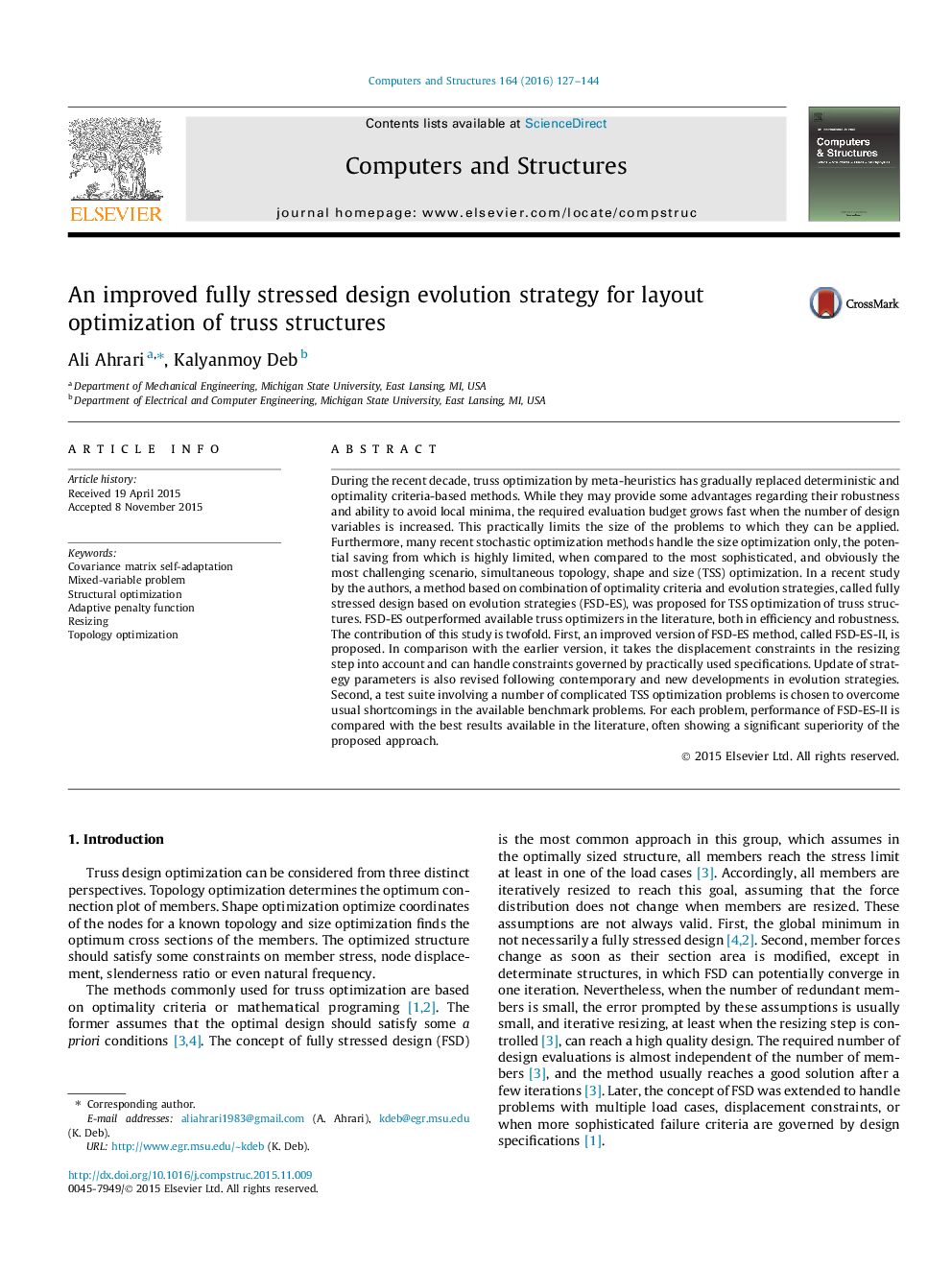| Article ID | Journal | Published Year | Pages | File Type |
|---|---|---|---|---|
| 6924373 | Computers & Structures | 2016 | 18 Pages |
Abstract
During the recent decade, truss optimization by meta-heuristics has gradually replaced deterministic and optimality criteria-based methods. While they may provide some advantages regarding their robustness and ability to avoid local minima, the required evaluation budget grows fast when the number of design variables is increased. This practically limits the size of the problems to which they can be applied. Furthermore, many recent stochastic optimization methods handle the size optimization only, the potential saving from which is highly limited, when compared to the most sophisticated, and obviously the most challenging scenario, simultaneous topology, shape and size (TSS) optimization. In a recent study by the authors, a method based on combination of optimality criteria and evolution strategies, called fully stressed design based on evolution strategies (FSD-ES), was proposed for TSS optimization of truss structures. FSD-ES outperformed available truss optimizers in the literature, both in efficiency and robustness. The contribution of this study is twofold. First, an improved version of FSD-ES method, called FSD-ES-II, is proposed. In comparison with the earlier version, it takes the displacement constraints in the resizing step into account and can handle constraints governed by practically used specifications. Update of strategy parameters is also revised following contemporary and new developments in evolution strategies. Second, a test suite involving a number of complicated TSS optimization problems is chosen to overcome usual shortcomings in the available benchmark problems. For each problem, performance of FSD-ES-II is compared with the best results available in the literature, often showing a significant superiority of the proposed approach.
Related Topics
Physical Sciences and Engineering
Computer Science
Computer Science Applications
Authors
Ali Ahrari, Kalyanmoy Deb,
